Author: John-Joe Vollans
Photography: Ford
Ford’s star had been ascending for most of the 1980s, with only minor fumbles like the XR3 (at launch) and the RS200 folly blotting its copy book. To the general motoring public, at least in the UK, the blue oval could barely put a foot wrong. It seemed that everything to emerge from Ford’s European plants was snapped up as fast as it could be produced. The near fanatical Ford phenomenon could hardly have been felt any firmer than here in the UK. A polaroid shot of any British street corner in the mid-1980s would at least have included a Capri, MkIII Escort or Sierra and also, more than likely, a few Mk2 Fiestas nestled on nearby driveways. But where was Ford’s large saloon?
Although the previous Granadas had sold extremely well within their sector, this Midas touch never quite dominated during the badge-conscious 1980s era. This posed a particular problem in Europe where fellow German-built rivals like the Opel Senator and later Omega (Vauxhall Royale and Carlton to us) provided stiff competition. In the UK, the MkIII Granada – incidentally known as the MkI Scorpio in its native Deutschland – was up against rivals like the Rover 800, but even against this and the aforementioned rebadged Opels, still held its own. We still called the MkIII a Granada and would continue doing so until 1994 when the Mk2 Scorpio became the first model to be known by that moniker – aside from a top-level trim – in the UK and Ireland.
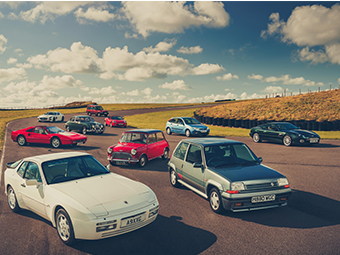
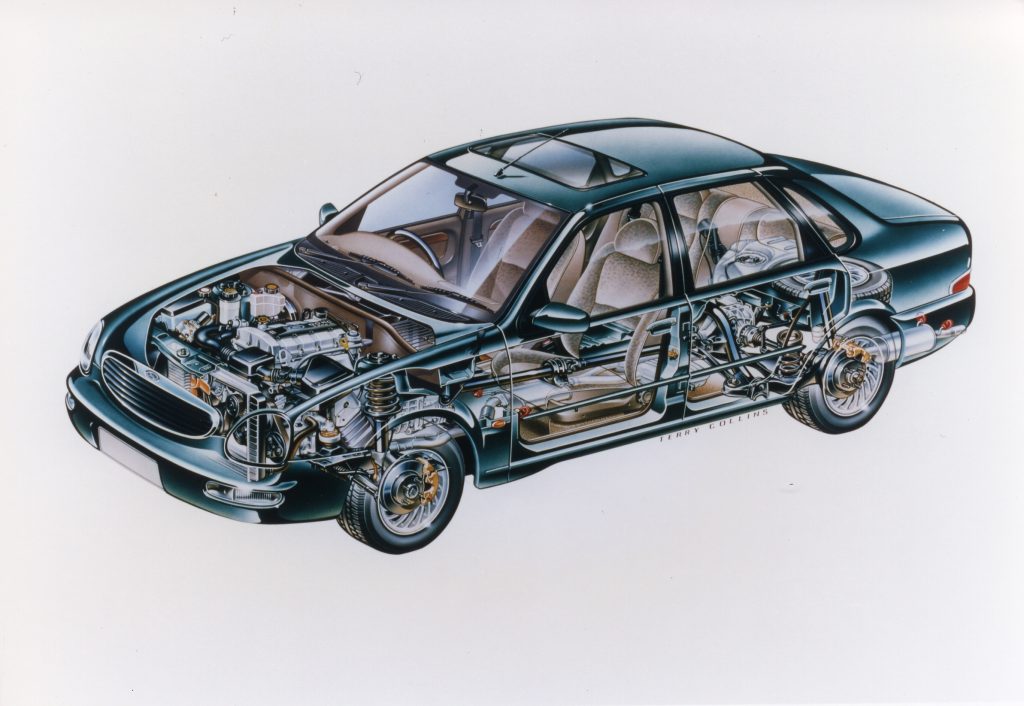
The idea of stretching a Sierra to make a larger car certainly wasn’t a bad one, and neither was loading it with toys and technology and hiking the price. Plenty still plumped for the Ford product in an era when many yuppies were more likely to choose an alternative from BMW or VAG. That’s not to say that there wasn’t room for improvement, for example, the MkIII wasn’t exactly universally praised as a cornering connoisseur and even its standard ABS couldn’t distract everyone from its relatively underwhelming engine options. Despite this, it sold well and, with the greater price incentive, was loved by dealership sales people across the continent.
Ever-market-conscious Ford realised this, of course, and set about further improving the MkIII Granada. Namely – thanks to Cosworth’s magic touch – added a 24-valve version of its 2.9-litre V6 that allowed the ‘Granny’ to scoot to 60mph in just 8.8 seconds, highly respectable for a car that weighed 1420kg (3131lbs).
It was a welcome return for Ford fans who missed the rally- and circuit-inspired shenanigans of the rest of its range. With this in mind, the 1990s replacement for the Granada was awaited with baited breath. Attendees of the 1994 Paris Motor Show promptly gathered around the Ford stand at the allotted time – likely with a growing sense of anticipation – ready to see a new Granada ready to set a wolf among the premium saloon pigeons. With covers unveiled, we can only imagine the gasps, or perhaps titters, as the automotive equivalent of Mr Blobby emerged.
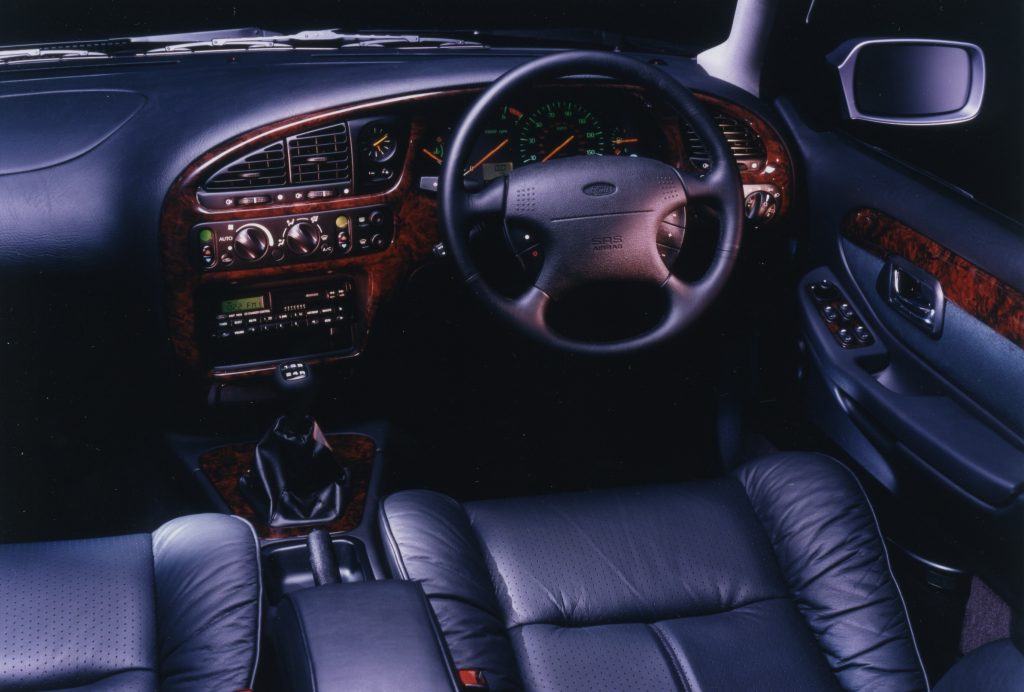
To say the Scorpio’s design was challenging in the mid-1990s is a gross understatement, but in many ways it was ahead of its time; how often have we seen full-width rear lights since? The US influence is impossible to deny – it even uses the door handles from a Crown Vic – but has our near overwhelming European rejection of the Scorpio meant we’ve missed out?
Beneath its marmite-like bulbous exterior were some highly revised mechanicals and genuine engineering excellence. Deploying the know-how needed to make the magnificent Mondeo, Ford engineers took another look at the old Granada platform – especially its front-end suspension – reworking the lower wishbones into an A-shaped arrangement that was far better able to counter understeer. This big Ford was far more a twisty A-route brawler than a Bingo-bound boat. A revised front anti-roll bar – previously part of the suspension’s lower link – was now independent via drop links, drastically reduced the car’s tendency to tip. A myriad of smaller changes, like revised castor angles for the front wheels and the addition of a fluid-filled lower front suspension bush, also improved the car’s vital straight-line stability.
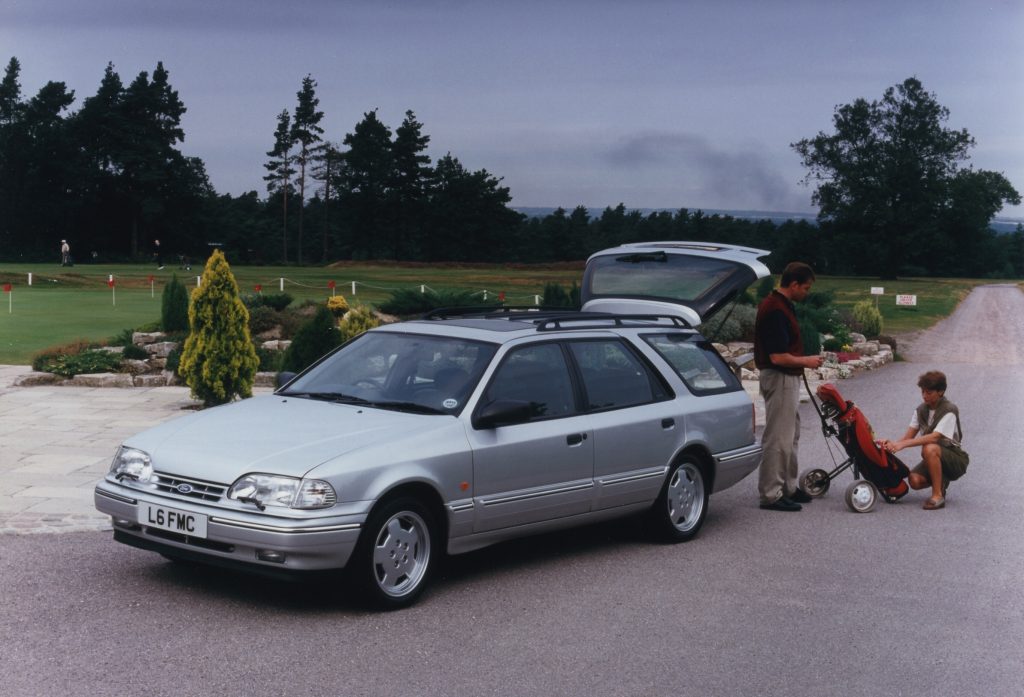
Despite the tight margins (and therefore budget) at the top of the Ford model lineup, the Scorpio’s engine department saw similarly dramatic improvements. Gone was the wheezy old single-cam 1.8-litre Pinto at the entry level, instead replaced by the far more up-to-date 2.0-litre 16-valve N3A, boasting 136bhp (from 1996 a frugal 8-valve version returned). Further up the range things got a lot more interesting, even though the old 12-valve V6 still soldiered on, the Cosworth 24-valve version was also carried over from the late Granada MkIII although, once again, heavily revised. Electronic engine management, revised camshafts and a variable-length inlet lifted this bent sixes’ horsepower from 192bhp to 204bhp. That was enough for a top-flight Scorpio to keep pace with all but M Power rivals from BMW although, sadly, it only came matched to a four-speed automatic transmission. From 1996 a new 2.3-litre version of the balanced twin-cam four-cylinder engine arrived, offering almost as much go as the sixes but without their costly fuel economy. This option soon became the preference for Ford customers determined to buy their executive express from the blue oval.
The following year, having finally got the public and press memo about its awkward looks, Ford restyled the Scorpio with a heavily revised rear that dropped a lot of its dumpiness, while a new bumper up front did the same, but it was all a bit too little, too late. Ford decided to give its big executive a golden handshake later that year, parachuting in the top-flight V6 Ghia X Mondeo in its place. Although deemed a relative flop, Ford still shifted over 98k Scorpios in four years, but that was small fry by Blue Oval standards of the time. Why the Scorpio should interest you today is because it represents one of the rarest things in the classic era, a Ford flop. The car might have been decent to drive, and subjectively interesting to look at, but it was primarily designed to be a safe, swift and technologically advanced living room on wheels and, by most of those metrics at least, it succeeded. Later versions were vastly improved over their Granada predecessors, but despite this, they’re still available for peanuts today. Should you take another look at the Scorpio? We certainly think so.
Did we all miss the point with the Scorpio, or did its looks doom it forever? Let us know in the comments below.
Classic car insurance from Hagerty
Keep your classic on the road with expert classic car insurance built by car lovers, for car lovers. Rated ‘Excellent’ on TrustPilot.
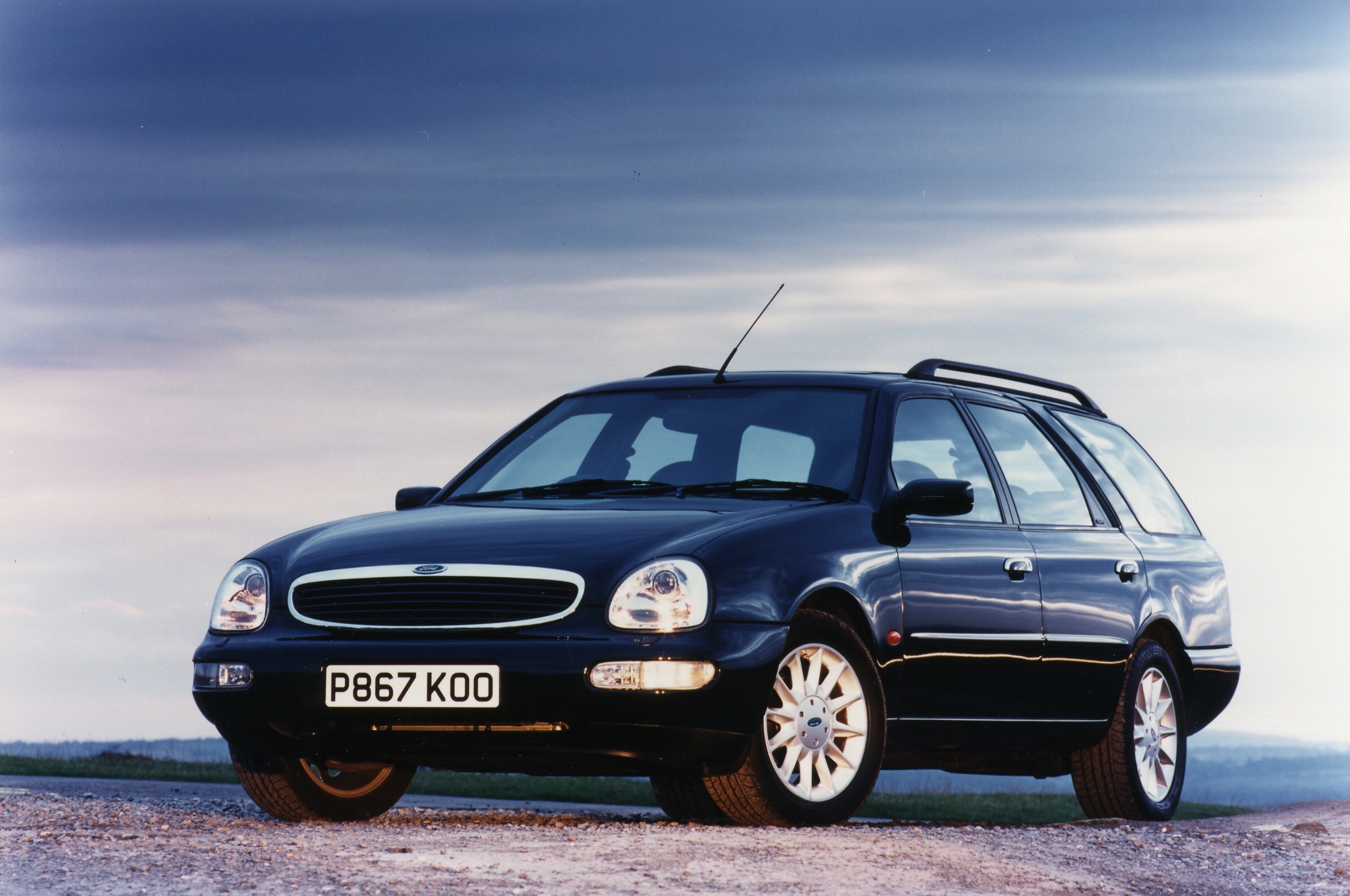









The Scorpio is the best car for BWS banger racing ever, they are the weapon of choice for most competitive drivers.
My father thought his diesel version (which you don’t seem to mention) was good enough to buy it from the company he worked for when he retired, it had worked well for long distance commutes between Nottingham/Yorkshire and his retirement farm in West Wales as well as daily work commutes between Nottingham and Sheffield, frequently towing a one tonne capacity plant trailer loaded with farm scrap etc.
Continued to serve well for a few years, until a leaking oil line or similar caused a wrecked engine on the return from Heathrow. Replacement engine negated the bargain that it had been to hang onto 😔
Always seemed a very comfortable and well fitted out car, that would cover the miles in a relaxed manner, a little more comfortable in fact than it’s replacement, an Audi A6 2.4 petrol automatic that was definitely teutonically efficient but a little dull 🤔
I had three Bejam company car Scorpios, then a private flat headlight saloon automatic followed by a Mooneyes Granada estate and all were brilliant cars the final one quite a workhorse for me as I ran my then ‘Toylander’ business. Using it to collect stock from Sheffield three hours drive away.
The load capacity was enormous I remember collecting stock and my nephew from university and all the while a comfortable sporty drive in manual form. Miss it.